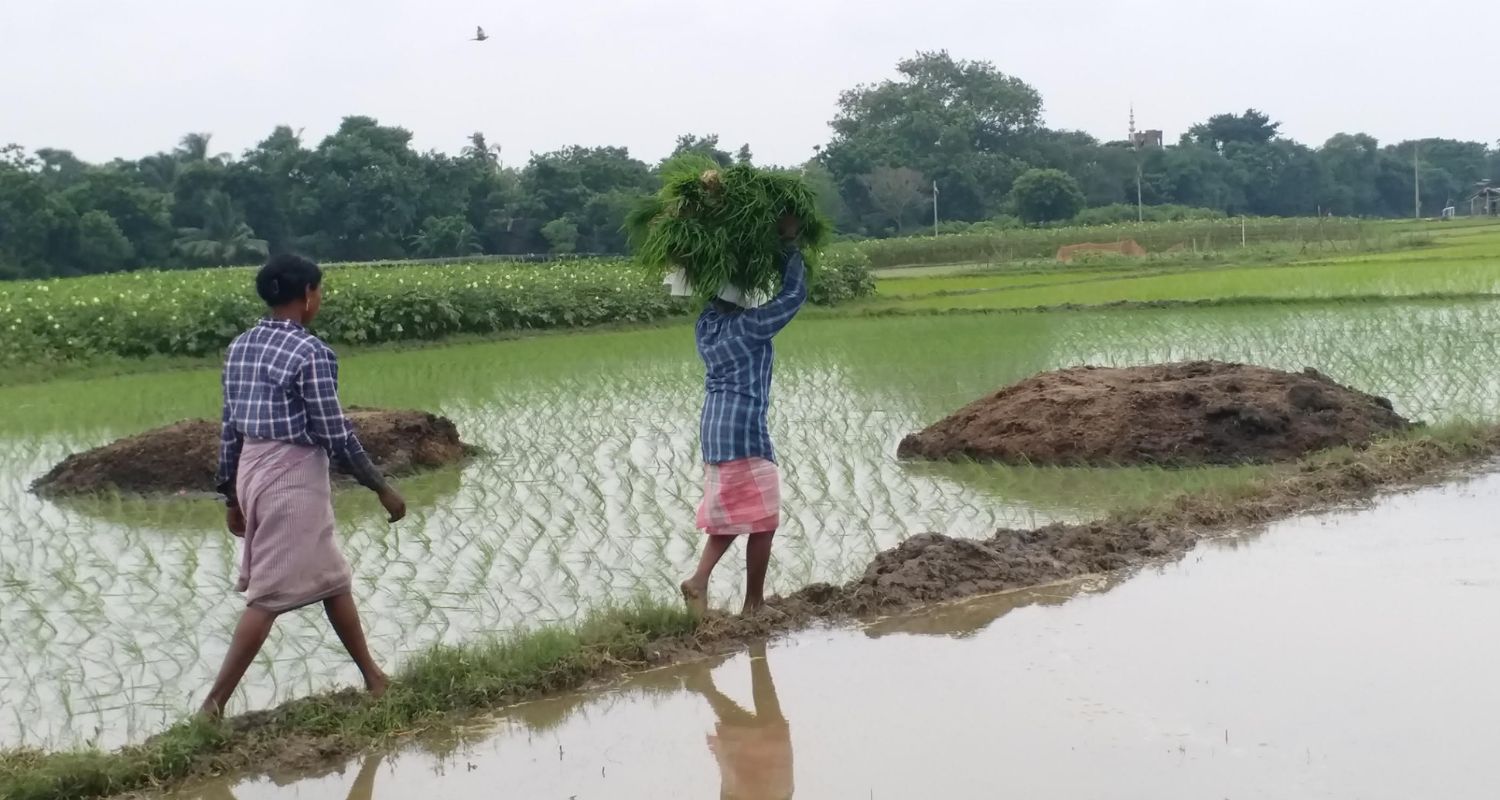East Burdwan, often hailed as the 'rice bowl' of eastern India, is once again showing signs of agricultural optimism as farmers and traders eye a promising Aman paddy season, thanks to consistent rainfall after an extended dry spell. Known for producing quality varieties like Gobindabhog, Sita, Lal Swarna, and Atap, the district plays a crucial role in both domestic and international consumption.
East Burdwan has witnessed steady rainfall since late June, easing fears over water scarcity that had initially scared farmers due to prolonged summer heat. The water released by the Damodar Valley Corporation (DVC) has also helped mitigate the water shortage. However, the heavy downpours have damaged seedbeds across several areas, leading to delays in planting.

“Rain is essential for Aman paddy, but this time, the rainfall is more than what we need,” said local farmer Santu Sar, adding, “We’re struggling because despite cultivating paddy, we often have to buy rice to eat. The price we receive for paddy doesn’t match the market rate for rice. Last season, we suffered losses from red gold paddy, but we are still continuing.”
As of now, only 5 per cent of the targeted 3.8 lakh hectares of land has been planted with paddy. According to the Agriculture Department, transplanting covers 20–25 percent of land which will be completed by mid-August. This year, production levels are expected to be much higher comparing to last year. Farmers say that the growing costs of fertilisers and other inputs are increasing their financial burden. “Even if the government sets a minimum support price, it’s not profitable for farmers,” said Aniruddha Kundu, District Secretary of the Agriculture and Farmers’ Rescue Committee, adding, “Unless the Swaminathan Commission’s recommendations are adopted, profitability will remain out of reach.”
Despite early challenges, farmers are optimistic, with many replanting seedbeds and hoping for a healthy yield. If the weather favours, 2026 could be a good year for cultivation and exports. "With over 100 rice mills — including 30 specialising in Gobindabhog rice — East Burdwan stands as a key hub for rice exports, having recorded daily exports of nearly 5,500 metric tons before the 2023 export restrictions." The Centre had imposed duties to stabilise domestic food supply but lifted the export ban in September 2024.
Also Read: Train hits elephant herd in Bengal's Paschim Medinipur, 3 dead
The Centre also reduced the rice export tax from 20 per cent to 10 per cent, including on basmati rice. Countries like Pakistan, Bangladesh Thailand, and Vietnam rely heavily on rice imports from India, offering Burdwan’s peasants a global market. District Rice Mill Association Vice President Subrata Mandal noted, “I was hoping for a strong cultivation season. Excessive rain has raised some concerns, but if the yield is high, rice prices will fall, boosting our competitiveness in foreign markets.”
Govindabhog rice continues to be in high demand in Arab and European countries, although exports to southern Indian states have declined due to pricing and policy constraints. According to Mehboob Mandal, Executive Director of the Agricultural Irrigation and Cooperative Standing Committee, over 3.77 lakh hectares were cultivated last season. “Rains have been good this time, and so we expect a strong yield and better export numbers,” he added.
At one time, up to 1 lakh metric tons of Atap rice were exported monthly from the district. Though current figures are slightly lower, traders believe that favorable weather and government support could lead to recovery. With exports headed to countries like Bangladesh, South Africa, Sri Lanka, Dubai, Iran, Iraq and the UK, a good Aman crop could significantly benefit the district’s farmers and boost the region's contribution to India's economy.
Also Read: No time for high tea as output declines


